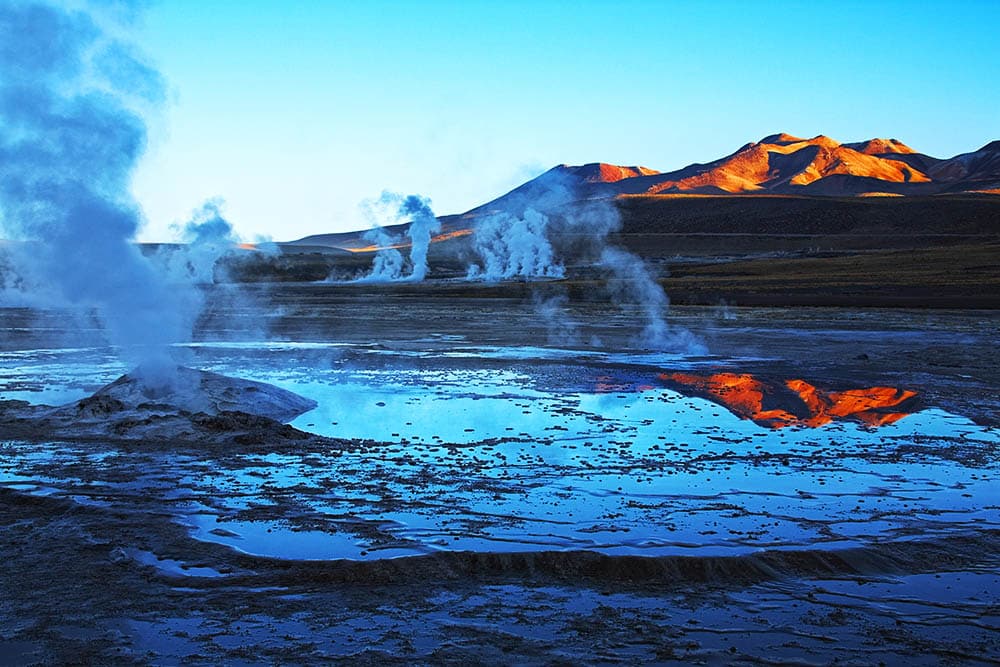Unleashing the True Potential of Geothermal Energy: The Secret to a Sustainable Future
The search for a sustainable future has led to a wide range of renewable energy sources. However, one source stands out as a proven and reliable option: geothermal energy. This is not a new technology, in fact, it was first used thousands of years ago by the ancient Romans who heated their homes using underground hot water. Today, geothermal energy is estimated to meet up to 10% of the world’s energy needs, with significant potential for expansion. In this article, we will explore what geothermal energy is, how it works, and why it should be considered a primary option in the quest for a sustainable future.
What is Geothermal Energy?
Geothermal energy is heat generated and stored within the Earth’s crust. It is estimated that the earth’s core has temperatures of over 6,000°C, which slowly releases heat to the surrounding rock layers, and eventually to the surface. The heat can be used to generate electricity or directly used for heating and cooling purposes in buildings. Geothermal energy is considered renewable because it is constantly produced by the earth’s natural processes and does not require the burning of fossil fuels.
How Does Geothermal Energy Work?
Geothermal energy is extracted by drilling wells into the earth to access hot water and steam reservoirs. The wells can be shallow or deep, depending on the temperature of the underground water. Hot water and steam are pumped to the surface and separated to produce electricity or used directly for heating and cooling buildings. Once the heat is extracted, the cooled water is injected back into the ground to be reheated by the earth’s natural processes. This creates a closed system with no waste or emissions, making it an environmentally friendly source of energy.
The Advantages of Geothermal Energy
Compared to fossil fuels, geothermal energy has several advantages that make it an excellent option for a sustainable future.
Renewable and Clean
Geothermal energy is renewable and does not emit any greenhouse gases or pollutants. Unlike fossil fuels, it does not require combustion and therefore does not produce any harmful emissions.
Reliable and Stable
Geothermal energy can be produced 24/7, and is not affected by weather conditions or other external factors. Unlike solar and wind power, which are dependent on the weather, geothermal energy provides a reliable and consistent source of energy.
Low Operating Costs
Once a geothermal plant is installed, the operating costs are relatively low. The cost of extracting the heat from the earth is minimal, and therefore, the energy generated is cheaper compared to other sources.
Community Benefits
Geothermal energy plants can benefit the community in several ways. They provide job opportunities, reduce the reliance on foreign oil, and stimulate local economies. Moreover, using geothermal energy for heating and cooling in buildings can save homeowners money on their energy bills.
The Challenges of Geothermal Energy
Despite its many advantages, geothermal energy faces several challenges that make it less attractive than other renewable sources.
Cost of Installation
The upfront cost of drilling wells and constructing the required infrastructure is high. This is especially true for deep wells, which require specialized equipment and expertise.
Location-Specific
Geothermal energy is location-specific, meaning that it can only be produced in areas where the underground water and rock formations are suitable. This makes it more challenging to deploy in places where the geology is not favorable.
Environmental Concerns
Geothermal energy plants can have environmental impacts, mainly due to the injection of cooled water into the ground. In some cases, this can cause seismic activity or water pollution. There are also concerns about the use of toxic chemicals in drilling and the impact on wildlife.
The Future of Geothermal Energy
Despite the challenges, geothermal energy has significant potential for growth, especially as society transitions to a sustainable future. Technological advancements, such as enhanced geothermal systems, could extend the range of locations suitable for geothermal energy production. Moreover, policymakers should prioritize geothermal energy in their agendas, providing incentives and support for its development.
Tips for Deploying Geothermal Energy
If you are considering geothermal energy for your home or business, here are some tips to help you get started:
Investigate the Geology of the Area
Before investing in geothermal energy, research the geology of the area to determine its suitability. Hire a geologist or a geothermal professional to evaluate the site.
Choose the Right System
There are two main types of geothermal systems: ground source heat pumps and geothermal power plants. Choose the one that best fits your needs and budget.
Ensure Proper Installation
To avoid costly repairs and ensure optimal performance, hire a professional to install the system. Make sure they have experience with geothermal energy installations.
Maintain the System Regularly
Like any other system, geothermal energy requires regular maintenance. Schedule annual inspections and repairs with a professional.
Conclusion
Geothermal energy is a reliable and sustainable option for a future powered by renewable energy. It provides a stable source of energy without emitting harmful gases or pollutants. While it faces several challenges, geothermal energy has significant potential for growth and should be considered a primary option in the quest for a sustainable future.
- Join the Sustainable Revolution: Embrace Reuse to Save the Planet and Your Wallet! - 28 de abril de 2023
- Join the Movement: How Incorporating Sustainable Habits Can Benefit You and the Environment! - 28 de abril de 2023
- Join the movement towards a greener future: Embrace sustainable tourism today! - 28 de abril de 2023
